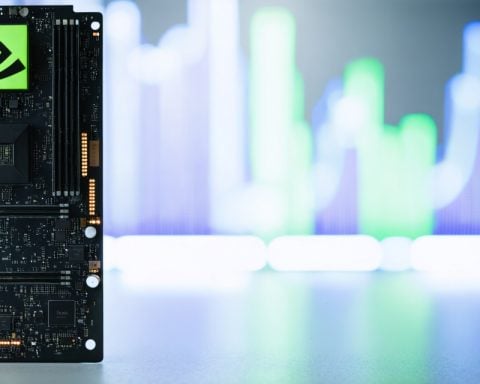This week in the realm of autonomous vehicles has brought significant developments involving major players like Ford and Guident.
The National Highway Traffic Safety Administration (NHTSA) is scrutinizing Ford’s BlueCruise automation system following two tragic accidents with the Mustang Mach-E. These incidents occurred while the system was active at highway speeds during night-time driving. Initial investigations have pointed out potential shortcomings in the system’s ability to detect stationary objects, particularly in poor visibility situations. NHTSA’s findings encompass 32 total crashes and over 2,000 non-crash incidents attributed to BlueCruise. This analysis aims to better understand the system’s performance limits and the responsibilities of drivers during such critical moments.
In another monumental update, Guident Corporation has proclaimed a major advancement in its intellectual property strategy. The firm secured its European Patent Grant, now valid in 20 countries, which focuses on a Remote Monitoring & Control Center designed to improve safety through AI technology. Additionally, they received a U.S. Notice of Allowance for a patent related to near real-time vehicle data streaming.
Meanwhile, Aptiv PLC announced its upcoming separation of the Electrical Distribution Systems division into a standalone entity, a move that reflects a commitment to tailor market strategies towards the rising trend of electric vehicles. This strategic realignment aims at enhancing operational focus and delivering greater value to shareholders by 2026.
Implications of Autonomous Vehicles on Society and Environment
The increasing integration of autonomous vehicles (AVs) into our daily lives heralds significant changes for society, culture, and the global economy. As seen with recent developments from industry leaders like Ford and Guident, the discourse surrounding AVs extends beyond mere technological advancements; it touches upon safety, accountability, and innovation strategies that define modern mobility.
Safety concerns, particularly surrounding Ford’s BlueCruise system, emphasize the urgent need for rigorous regulatory frameworks. With NHTSA’s ongoing investigations into crashes attributed to this system, it becomes clear that as AV technology advances, so too must our approach to safety regulations. The potential for thousands of collisions linked to driver-assist systems necessitates a reassessment of how responsibility is shared among manufacturers, developers, and operators.
Culturally, the emergence of AVs will reshape transportation norms, dismantling traditional car ownership models and potentially ushering in a new era of shared mobility services. This shift could influence urban planning and public transport infrastructure, making cities more accessible and efficient.
In terms of the global economy, the increasing demand for electric vehicles, exemplified by Aptiv’s separation strategy, underscores a significant transformation in manufacturing and supply chains. This trend may lead to stronger partnerships between technology and automotive sectors, creating job opportunities in innovative fields while advancing sustainable practices.
Finally, potential environmental impacts cannot be overlooked. The transition to electric and autonomous vehicles presents an opportunity to reduce carbon emissions and achieve cleaner air quality. However, the extraction and disposal of materials used in batteries remain critical challenges that must be addressed to ensure a truly sustainable future. As these developments unfold, society must adapt and respond thoughtfully to both the benefits and risks associated with this technological revolution.
Autonomous Vehicles: Pivotal Developments from Ford and Guident
Key Developments in Autonomous Vehicle Technology
In the ever-evolving domain of autonomous vehicles, recent events concerning established names like Ford and Guident have sparked significant discussion and analysis.
Ford’s BlueCruise Under Investigation
The National Highway Traffic Safety Administration (NHTSA) is currently investigating Ford’s BlueCruise automation system following two fatal accidents involving the Mustang Mach-E. These accidents occurred while BlueCruise was activated at highway speeds during nighttime, raising serious concerns.
The investigation highlights the system’s challenges in detecting stationary objects, especially under poor visibility conditions. This scrutiny extends to encompass a staggering 32 crashes and over 2,000 reported non-crash incidents associated with BlueCruise. NHTSA’s inquiry aims to elucidate the system’s operational limits and clarify driver responsibilities during critical driving scenarios. Understanding these aspects is essential for both regulatory bodies and manufacturers as they strive for safer automotive technologies.
Guident’s Intellectual Property Advancements
On an optimistic note, Guident Corporation has made significant strides in its intellectual property portfolio. The company recently secured a European Patent Grant, now effective in 20 countries, centered around a Remote Monitoring & Control Center leveraging AI technology to enhance safety measures. Alongside this achievement, Guident also obtained a U.S. Notice of Allowance for a patent dealing with near real-time vehicle data streaming, highlighting its commitment to innovation in the autonomous driving sector.
Aptiv’s Strategic Realignment for EV Trends
In parallel with Ford and Guident’s developments, Aptiv PLC has announced an impending separation of its Electrical Distribution Systems division into a standalone entity. This strategic move underscores Aptiv’s focus on adapting to the accelerating demand for electric vehicles. By 2026, this separation aims to sharpen operational focus and maximize shareholder value in an increasingly competitive market.
Pros and Cons of Current Trends in Autonomous Vehicle Development
Pros:
– Increased focus on safety: Initiatives like those from Guident aim to enhance safety through innovative technologies.
– Adaptation to market needs: Companies like Aptiv are strategically realigning to capitalize on trends in electric vehicles.
Cons:
– Regulatory scrutiny: Investigations into systems like Ford’s BlueCruise could delay further advancements.
– Operational challenges: Existing technology reveals significant limitations that could hinder widespread adoption.
Conclusion
The landscape of autonomous vehicles is witnessing rapid advancements punctuated by critical investigations and strategic innovations. Understanding these developments is paramount for stakeholders ranging from consumers to investors. As the industry navigates challenges and opportunities, the focus remains on enhancing safety, compliance, and market relevance.
For the latest insights and developments in the automotive world, visit Automotive World.













